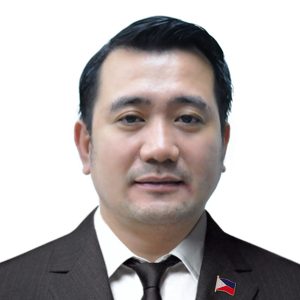
A week ago, we were taught with Futures Thinking in our Master in Public Safety Administration class of the Philippine Public Safety College. There are a hundred of us coming from the police, jail, fire, civilian agencies, higher learning institutions, basic education, private think tank, legislative and executive departments, and local governments, among others.
It was also the first time I heard about futures thinking, for I always had the idea that there is just one future, which everybody wants to achieve in the coming many tomorrows.
We had Professor Shermon Cruz, a leading expert in the futures thinking not only in the Philippines but also in Asia. He facilitated the futures thinking in countries of the Middle East.
Anyway, one may have noticed why do I place “s” on the future, making it futures thinking.
Simple, there are multiple futures. Although we always envision a kind of future to happen, and we endeavor vigorously to arrive at a kind of future we want, but by twist of fate, we arrive at a totally different future.
Why futures thinking is important?
The future cannot be predicted. No matter what advances are made in technology, yet, the future remains uncertain and unpredictable. However, it can be anticipated.
There are multiple futures such as a probable future, possible future, and the preferred future.
With the circumstances and events that unfold in history, we can have a good peek of the future. But let no amount of confidence dull the mind for the world changes rapidly, unpredictably, paradoxically and usually tangled.
The changes that happen today, having been influenced by the past events, may likely find itself in the future. There are also game changers which are totally unexpected yet highly disruptive of the ordinary routine of the day.
The pandemic is a good example.
In the science of disaster mitigation and adaptation, it is called as the black swan. An event that has low probability of occurrence but largely disruptive.
And true to its nature, the pandemic has disrupted the world. It put a halt to the busy business districts, brought the family together during lockdowns, churned the biggest economic spending unprecedented in a known history.
What makes futures thinking relevant to Mindanao? To Philippines?
My answer is that our Mindanao future is delicately placed on top of a fragile macroeconomic environment.
Taking considerable reviews of our Mindanao macro fundamentals, we would realize the importance of safety as basic foundation of development programs. Safety is not security. It is the psychological feeling that no harm comes in any day, in any place. Or if danger comes, people can find ways to mitigate them because of mechanisms in place.
Given the advantage of being able to see the programs and project, I coined the Mindanao macro fundamentals as SWETIE which stands for safety, water, energy, transportation and logistics, institutions, and the environment.
Now what kind of future are we imagining given the macro fundamentals that we need? How do we employ these fundamentals if there is a black swan to happen like multiple disasters in the form of volcanic eruption causing tsunami while barraged by a typhoon under the pandemic?
The objective of every crisis manager is to bring the impact of a disaster to a situation of being uncontrollable to state of control, from short and swift to longer cycle time to give way for response and rescue, and to reduce adverse impact in the lives and livelihood of the public.
Mindanao is touted as the food basket given the ability to produce food year round. But recently, with the climate change, Mindanao found its way along the typhoon path. How did we prepare ourselves for this scenario?
Let me go back to the idea I wanted to share here. How can the government reduce the impact of multiple disasters?
The answer to this requires a huge amount of imagination, envisioning, and catapulting the energy into a set of futures.
We have to continuously prepare for multiple scenarios in the future, good and bad.
We have to make our minds familiar with risks and disasters so that when the time comes, it won’t all be “flight syndrome”, but also the “reasonable fight” that can bring the community to an anticipatory behavior.
It should be all ingrained in our system as we go to work, we go home, perform our hobby, or spend to enjoy our vacations.
The basic to this is on taking a serious assessment of the location of your home, is it flood-prone, is it contagious with neighbors leaving narrow gauntlet for exit, are the walls strong to withstand tremors? And so on.
Together let us envision these futures, and work with confidence so that we won’t be taken by surprise.
[Adrian Tamayo is the head of the Public Relations of the Mindanao Development Authority (MinDA). He teaches economics at the Graduate School of the University of Mindanao and currently on a scholarship grant for a Master of Public Safety Administration or MPSA at the Philippine Public Safety College of the DILG.
